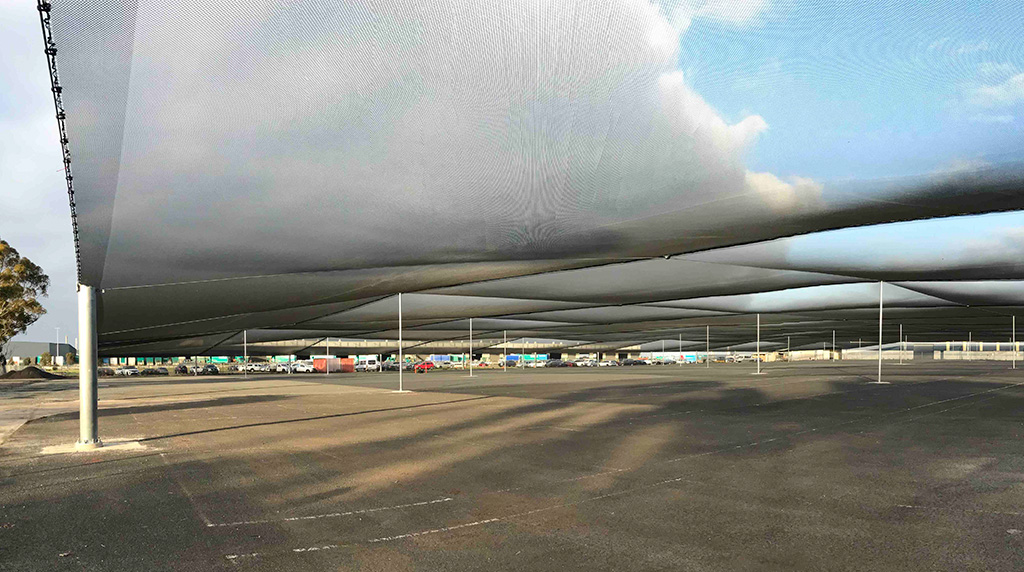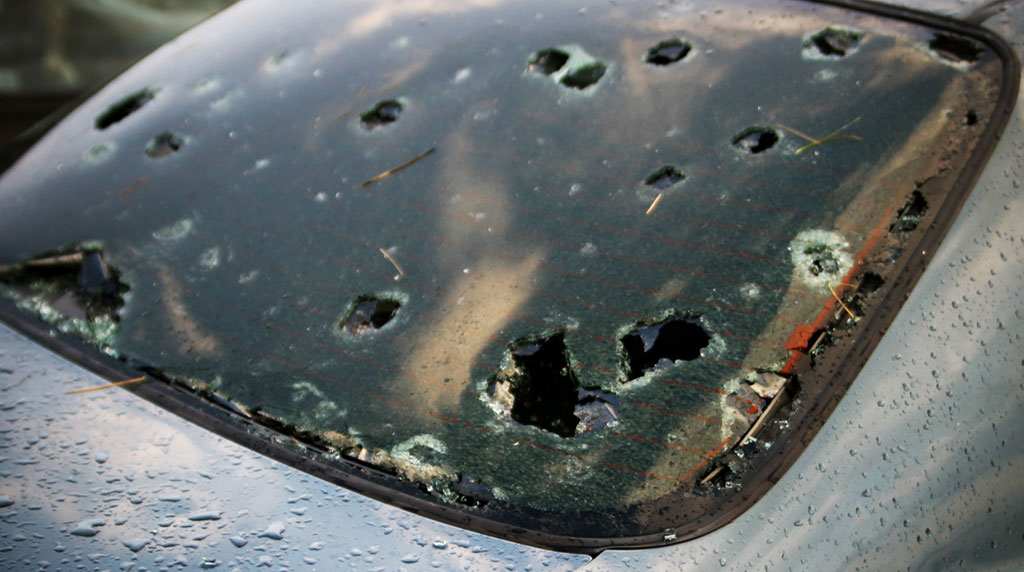THE Victorian Automotive Chamber of Commerce (VACC) has issued special guidelines for car retailers following a storm cell that crossed part of the Victorian city of Bendigo and other parts of Central Victoria leaving around 700 storm damaged cars in its wake.
The VACC provided the following extensive guidance on how to treat vehicles that LMCTs plan to retail that have existing or repaired hail damage.
New motor vehicles
The Australian Consumer Law (ACL) has specific guarantees as to how a product should perform and look. Section 54 of the ACL sets out the guarantee that goods supplied in trade and commerce (except for when bought at auction) will be of Acceptable Quality.
This guarantee includes the expectation that goods are safe, durable and free from defects, are acceptable in appearance and finish and does what it would ordinarily be expected to do.
The expectation from a purchaser of a new motor vehicle is that those expectations are met.
For used motor vehicles, the premise with respect to the age of the product, kilometres travelled, and the price paid for the product should be considered.
In Victoria LMCTs have several options to consider with announcing known defects on a used motor vehicle to consumers. (See more information below.)
What does the ACL say about the retail of defective goods?
Australian Government guidance advises that defective goods (i.e., in this context a hail-damaged new motor vehicle) can be sold if the consumer is alerted to the defects before the sale.
The most appropriate way a sale should be facilitated is for the dealer to inform the consumer of the defect by displaying a written notice on the new motor vehicle that advises the consumer of the existing defect with the goods. Any written notice must be clearly presented, legible and expressed in plain language.
Section 54(4) of the ACL deems goods to be of acceptable quality if the only reason that they are not of acceptable quality relates to matters that were specifically drawn to the consumer’s attention prior to supply. Under this pretext the supplier is excused from liability where the problem with the goods was specifically drawn to the consumer’s attention before the consumer agreed to the supply.
Written notice of defects
A separate deeming provision applies to defected or blemished products (ie, new and used motor vehicles) that are displayed for sale.
Those affected new motor vehicles will be deemed to be of acceptable quality if they are displayed with a written notice that specifically draws the consumer’s attention to the reason why they are not of acceptable quality.
When a consumer is alerted to defects in goods before sale, they will not have the right to a remedy if those particular defects later cause problems with the goods.
The legislative support for this is found in Section 54(5) of the ACL that provides if :
The goods are displayed for sale or hire and;
i) the goods would not be of acceptable quality if they were supplied to a consumer;
ii) the reason or reasons why they are not of acceptable quality are taken to have been specifically drawn to consumer’s attention if those reasons were disclosed on a written notice that was displayed with the goods and that was transparent.
Dealers are advised that it is not enough to simply describe the goods as ‘damaged’, ‘seconds’, ‘sale’ items or ‘as is’.
A level of expanding upon the defect or blemish should be articulated clearly to the consumer, using legible and plain language in the written statement. In all instances, VACC urges LMCTs to make such statements in writing and have the purchaser initial or sign the written statement.
You should also be alert to how you advertise the vehicle for sale in all forms of advertisements. It is VACC’s strongest advice that those written statements and copies of advertisements that the purchaser relied upon should be part of any deal pack.
Importantly, dealers must understand that the consumer may be entitled to a remedy for a different fault.
Selling a motor vehicle as a ‘new motor vehicle’ after having hail or yard damage repaired
If you are selling a damaged new vehicle at a discounted price and you have informed a consumer of the reason for the discounted price, they cannot then claim that the identified damage is a failure to comply with a consumer guarantee.
However, if you do not disclose the damage at the point of sale, there is a risk that the vehicle may later be found to be of unacceptable quality, especially if the damage is not evident or cannot be discovered through a reasonable examination of the vehicle before purchase.
The basis for this position is referred to in Section 54(2) of the ACL which announces a statutory guarantee that goods are of an acceptable quality if they are fit for purpose, acceptable in appearance and finish, free from defects, safe and durable as a reasonable consumer fully acquainted with the state and condition of the goods.
It is VACC’s view that the phrase “fully acquainted” is important because sub-sections 54 (4), (5) and (7) go on to say that goods are deemed to be of an acceptable quality even where they are not, such as a hail damaged new car, if the consumer has the defects specifically drawn to their attention before purchase, or has inspected the goods where the defect is obvious upon examination.
It is VACC’s advice to all new motor vehicle dealers that all new vehicles that have had hail damaged repair work completed (e.g., through a Paintless Dent Repair) advises the consumer of the repair work before the point of sale.
How to treat used motor vehicles (including registered demonstrator stock) for the purposes of statutory warranty
For used vehicles with pre-existing faults/defects (for e.g., hail damage, worn transmission), VACC suggests that LMCTs attach to the motor vehicle the prescribed Form 5‘ ‘Statement of defects in a used motor car offered for sale.’ (The guidelines for this can be found in Regulation 13 of the Motor Car Traders Regulations 2018 (Vic) (‘the Regulations’).
The Form 5 will announce in writing to a consumer of the pre-existing defects that will not be covered under the statutory warranty provisions announced in the Motor Car Traders Act 1986 (Vic) (the Act). The Form 5 also acts as a way to advise the purchaser in writing of an estimated cost for the purchaser to repair any declared defect.
You should also be aware that :
- The legislative support for this is contained with Section 55 of the Act
- You can refer to Page 26 of the Regulations for the prescribed particulars of a Form 5.
- It is important to note that these exclusions as per Section 55 of the Act should be brought to the purchasers’ attention at, or before, the time of contract being signed by the purchaser.
- This written announcement should be sufficient to meet a LMCTs obligations as a supplier under Section 54(4) and Section 54(5) of the ACL.
- If you are selling a second hand or damaged vehicle that is still within an original warranty period, you should provide the consumer with information about the status of the manufacturer’s warranty, so they can be aware of any limits to the warranty before buying.
The issue with selling hail damaged vehicles can have severe impacts on consumers who may not be able to :
- Obtain finance on a vehicle with pre-existing damage.
- Obtain suitable insurance for a vehicle with pre-existing damage.
- Take advantage of any of the manufacturers original warranty and what parts may be voided (eg. paintwork).
VACC urges your dealership to have these conversations with the vehicle purchaser before they take delivery of the vehicle.
The issue of structural integrity
VicRoads advise that from the 30th September 2021, if a vehicle is damaged by hail and has only sustained cosmetic damage due to the direct impact of hail stones, it will no longer be recorded on the Victorian Written-Off Vehicles Register (WOVR). You do not need to repair the damage and you do not need a VIV certificate (as long as the damage is only cosmetic).
‘Cosmetic’ hail damage is minor dents to a vehicle that were caused by hailstones and don’t affect the integrity of the area, or any of the vehicle’s systems.
Vehicle Standard Information 26 advises that from a roadworthy perspective the structural component of all vehicles must be sound and free from cracks, damage, faulty repairs or modifications, rust, deterioration, distortion or any other condition which could lead to structural failure of the vehicle or adversely affect the performance of safety related features.
The body and fittings of all vehicles must be free from any damage, which might increase the risk or severity of injury to any occupant, pedestrian or other road user.
The issue of motor vehicle duty
LMCTs should be aware that the sale of discounted hail damage vehicles may draw the attention of the Victorian State Revenue Office (SRO) that the vehicle has been sold at less than market value. VACC urges that your deal pack be kept in as complete an order as possible for you to be able to display to the SRO because the vehicle was sold at a certain price.
Consumer Affairs Victoria view on damaged new cars
Previous advice on hail storm damaged new cars sourced from Consumer Affairs Victoria stated that if you are buying a new car damaged in this disaster at a discount price, the trader must inform you about the extent of the damage. However, once the trader informs you of the reason for the discounted price, you decide at your own risk whether to buy the car.
Other issues
It is VACC’s view that dealers should keep the process with consumers to the highest level of transparency and procedure.
VACC suggests that LMCTs use the elements contained within the Form 5 for new cars sold with pre-existing damage for any written notifications.
VACC urges LMCTs without undercover facilities to ensure that you maintain a level of awareness of the volatile weather events that are typical to your region by visiting the Bureau of Meteorology.
By John Mellor
















 Read More: Related articles
Read More: Related articles

